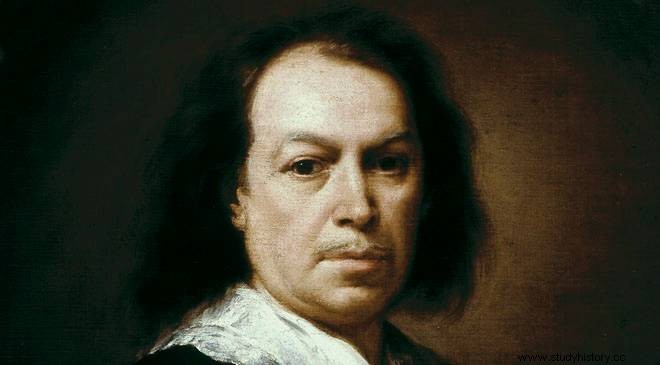By name, Bartholomew. Of surnames, Esteban and Murillo (although Pérez would be the legitimate one for being the first of his mother). Born in Seville at the end of December 1617 and baptized on the first day of the following year in the parish of Santa María Magdalena…
This could be a good start for a biography of the great Sevillian painter, don't you think? «And the youngest of 14 brothers ” we could add, which is not a small thing.

Bartolomé Esteban Murillo , orphan of father and mother before the age of 10, he lived on Santa Teresa street, next to Seville's Plaza de Santa Cruz. He was the painter of the Immaculate and the shepherds that illustrate our Christmas postcards. The artist whose remains are currently missing after the French looting of the Synagogue of Santa Cruz during his "visit" at the beginning of the 19th century.

Murillo was also the protagonist of one of the legends that swell our rich oral tradition. There are those who say that once, while walking around the majestic Cathedral or near the Port of Seville (which, although it may sound a little strange, existed and continues to exist, to the south of the beautiful city), a gypsy woman approached him he ventured to read her fate. Then, very seriously, she looked him in the eye and encouraged him not to go to any wedding, because one of them would be her unhappy end. They say that, in addition to being a fervent man of faith, he was quite superstitious, and that he even refused an invitation for fear of the prophecy being fulfilled.
He spent time and the master of the baroque, already advanced in years, received a commission from the convent of the Capuchins of Cádiz to cover the main altarpiece of the now defunct church of Santa Catalina with his paintings. He headed there, with the little aches of him but with the same innate feeling for the painting. It was the 80s of that 17th century and Murillo, like a good artist who wants to imbibe all the meaning of his work, decided to live together during that time in the same convent where he would give his last brushstrokes. And the prediction was fulfilled... he did not go as a godfather or as a husband, but as the author of a wedding painting:a divine commitment between Saint Catherine and God himself.

The mystical betrothal of Saint Catherine – Murillo
In The mystical betrothal of Saint Catherine (1682) we see represented the moment in which a court of celestial beings (presumably sent by the Most High), place nothing more and nothing less than a crown and a ring on the finger of the Saint, all this in the presence of more religious divinities . A full-fledged spiritual wedding. Murillo, as stated in his will, had not finished the work of the Church of the Capuchins in Cádiz when he had to return to Seville amid great pain caused by the fulfillment of the prophecy. While painting that heavenly wedding about four meters high on a scaffold, a wrong step led to a fatal fall. Although it is true that he did not kill him at the time, he forced Bartolomé Esteban Murillo to hang the brushes from him until he ended his life.
